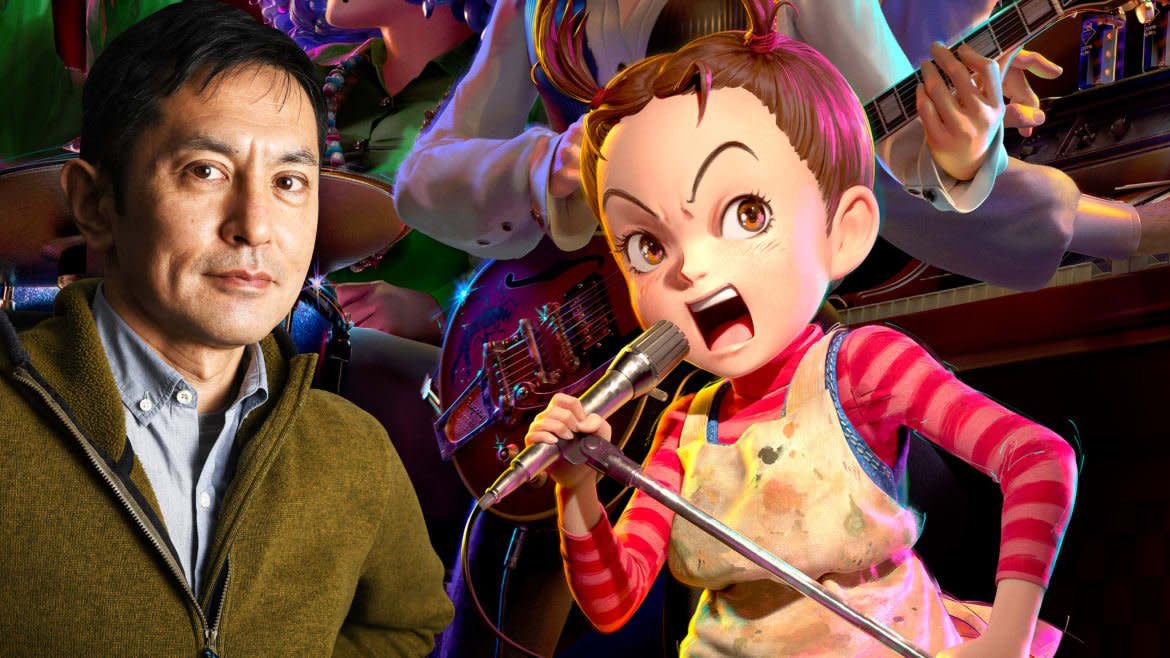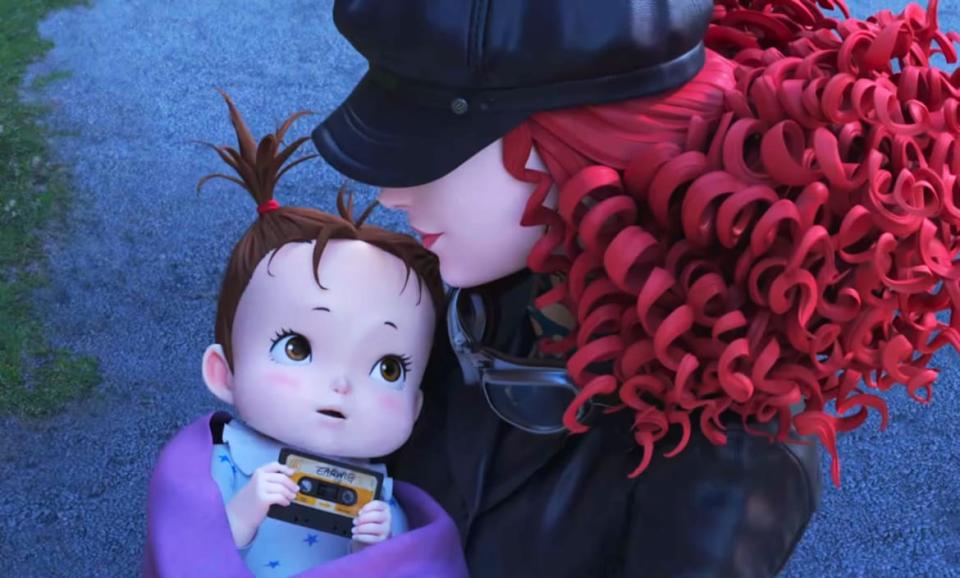Gorō Miyazaki on Studio Ghibli’s First CG-Animated Movie and Fan Backlash

Gorō Miyazaki gets it. The son of legendary animator and director Hayao Miyazaki knows you probably want Studio Ghibli, the Japanese studio co-founded by his father, to stay far out of the business of Pixar-esque CG-animated films.
It’s the studio’s lush hand-drawn masterpieces—like My Neighbor Totoro, Spirited Away, and Princess Mononoke, to name a few of its best-known works, all directed by Miyazaki’s father—that have made it so singular. The last two-and-a-half decades have seen an industry-consuming boom in CG animation, yet Studio Ghibli toiled on unperturbed, turning out timeless hand-drawn art until a short-lived hiatus in 2016. Now, the studio is returning with its first fully CG-animated feature film, Earwig and the Witch. It’s the younger Miyazaki’s third movie for the studio and the blowback, he anticipates, is both normal and inevitable.
“I, personally, am a fan of hand-drawn animation, especially the works done by Studio Ghibli,” Miyazaki tells The Daily Beast (with the aid of a translator) ahead of Earwig and the Witch’s HBO Max release. “I can understand that it is only natural for people like myself to feel like, ‘Why would Studio Ghibli want to go for a full CG 3D movie?’ I can totally understand where that’s coming from.”
As for why he did it, Miyazaki’s answer is simple: because he wanted to.
After helming Ronja, the Robber’s Daughter, a Studio Ghibli co-produced TV series that combined traditional cel animation with 3D computer graphics, Miyazaki began hoping to direct a feature-length CG film. It was his father Hayao and his longtime producer Toshio Suzuki who suggested that he try a film adaptation of Earwig and the Witch, the final novel from Diana Wynne Jones (author of Howl’s Moving Castle and Castle in the Air, both previously adapted by Hayao). He took the opportunity to break from tradition—a practice he’s become more and more familiar with.
Neil Gaiman on Why Social Media Outrage Will ‘Eat Us’ Alive
The former landscape designer and architectural consultant has always struck a different tone in his films than his fellow Studio Ghibli directors. His debut, the 2006 Ursula K. Le Guin adaptation Tales from Earthsea, was considered an artistic disappointment at the time of its release—an uncomfortable first for Studio Ghibli, though some critics have since found meaningful reflections in it of an anxious son’s strained relationship with his workaholic father. He followed up that film in 2013 with From Up on Poppy Hill, a more assured tale of young love in post-nuclear Japan. Then came Ronja, Studio Ghibli’s first TV show.
And now there is Earwig, whose jaunty style of 3D CG Miyazaki says was partially inspired by the stop-motion animation of studios like Laika (Kubo and the Two Strings) and Aardman (Shaun the Sheep). More than any other Ghibli director, each of Miyazaki’s projects has juxtaposed wildly with the last. Whether that’s a sign of artistic restlessness, tenacity, or a desire to prove himself under the weight of his last name is up for question but it’s difficult to deny his boldness.
He hopes he’s grown as a director since Tales of Earthsea—a project he took on at Suzuki’s suggestion, despite his father’s protests over his inexperience. It’s hard for him to tell; “the process is different each time,” after all. “Maybe I’ve become better at manipulating people and making people do what I want to do,” he half-jokes. “Or maybe not exactly manipulating but I think I’ve become better at telling people what my visions are and what I want to do in the film.”
In that way, he relates to his movie’s protagonist, an audacious orphan girl named Earwig who gets taken in by a stern witch, her feline familiar, and a demon with anger issues. The witch, Bella Yaga, intends for her new charge to serve as free slave labor. But Earwig has other plans: she uses her new surroundings to learn a bit of magic herself, unaware that she’s a witch’s daughter. “She doesn’t want to just sort of persevere, endure, and just, you know, take orders,” he says. “She wants to know why and what’s in it for her, so that it makes sense for her to do that chore or whatever is needed. I feel the same way. I don’t like people ordering me around without any good reason.”
He betrays a bit of Earwig’s fearlessness, too, the kind that seems to come more easily when one is the child of a celebrity. He takes his longtime champion Suzuki to task: “Here at Studio Ghibli, we’ll be discussing something very important and there’s myself and there’s Toshio. And there are moments where I feel that, OK, he’s trying to con [us and is] being a little deceptive. And I’ll be the one to tell everybody, don’t be so gullible, you know, don’t just do what you’re told. Always try to question what you’re being told.”
To hear him tell it, Miyazaki’s father didn’t have much to say at the start of production about Earwig’s planned CG aesthetic. “It wasn’t much of a conversation,” he recalls. “[He and Suzuki] just told me, OK, what do you think of this? Do you want to do this? And then I responded by saying, well, I’ll read it and think about it, and that was pretty much it.” He enlisted a “young staff” of animators and was left to his own devices. “I’m so sorry that it’s not the deep conversation you might have expected,” he laughs.
Hayao Miyazaki is credited on the film as a story planner, though Gorō says his participation was minimal. (The elder Miyazaki is busy at work on his own new film, How Do You Live?) In terms of the CG animation process, “Hayao Miyazaki knows nothing about computers,” he says. “So actually, I was able to keep him away from getting involved, which enabled me to have full freedom to do what I wanted to do. In that sense, it was very easy for me to work on this film.”
He did accept some of his dad’s advice about character work. “My father and I had a few conversations about how we were going to portray Earwig,” he says. The girl’s precocious plans to “control” people were of particular concern. “It’s written in the book that she sometimes manipulates people,” he says. “The word itself can sound quite negative, so we talked about how we could make her charming and a character people would love and relate to, without losing her essence.”

And though Earwig and the Witch might feel a world away from Studio Ghibli’s signature style, Miyazaki says he agonized over just how far it should stray. “I didn’t want to go too innovative with it because that would just alienate people,” he says, “and going too photorealistic would distance it too much from the Studio Ghibli style. So it was a very long process where we were trying to figure out the best balance to stay true to the Studio Ghibli look but also sort of do it in an innovative way and find a good fit.”
The film essentially unfolds in two settings: an orphanage and a magical object-cluttered home full of disappearing rooms and strange vortexes. That made it an ideal fit for CG too, Miyazaki says. “We didn’t want to make it a very epic story, because that would be a lot of work,” he laughs. “This story was very concise, compact, and very fun, and I felt that it was very fitting for what we were trying to do.”
As for how his relationship with his father has fared during the pandemic, Miyazaki is less forthcoming. “We have been in touch. I know he’s still alive,” he deadpans. He skipped his dad’s 80th birthday celebration at Studio Ghibli the week before. “Usually we’ll have everyone at the studio, gather, and do a big celebration. But this year, for obvious reasons, we weren’t able to gather in a huge group. They did a very tiny celebration, which I was not a part of.”
He hasn’t the time to say more. “We’ve got to get back to work this afternoon,” he smiles.
Get our top stories in your inbox every day. Sign up now!
Daily Beast Membership: Beast Inside goes deeper on the stories that matter to you. Learn more.

